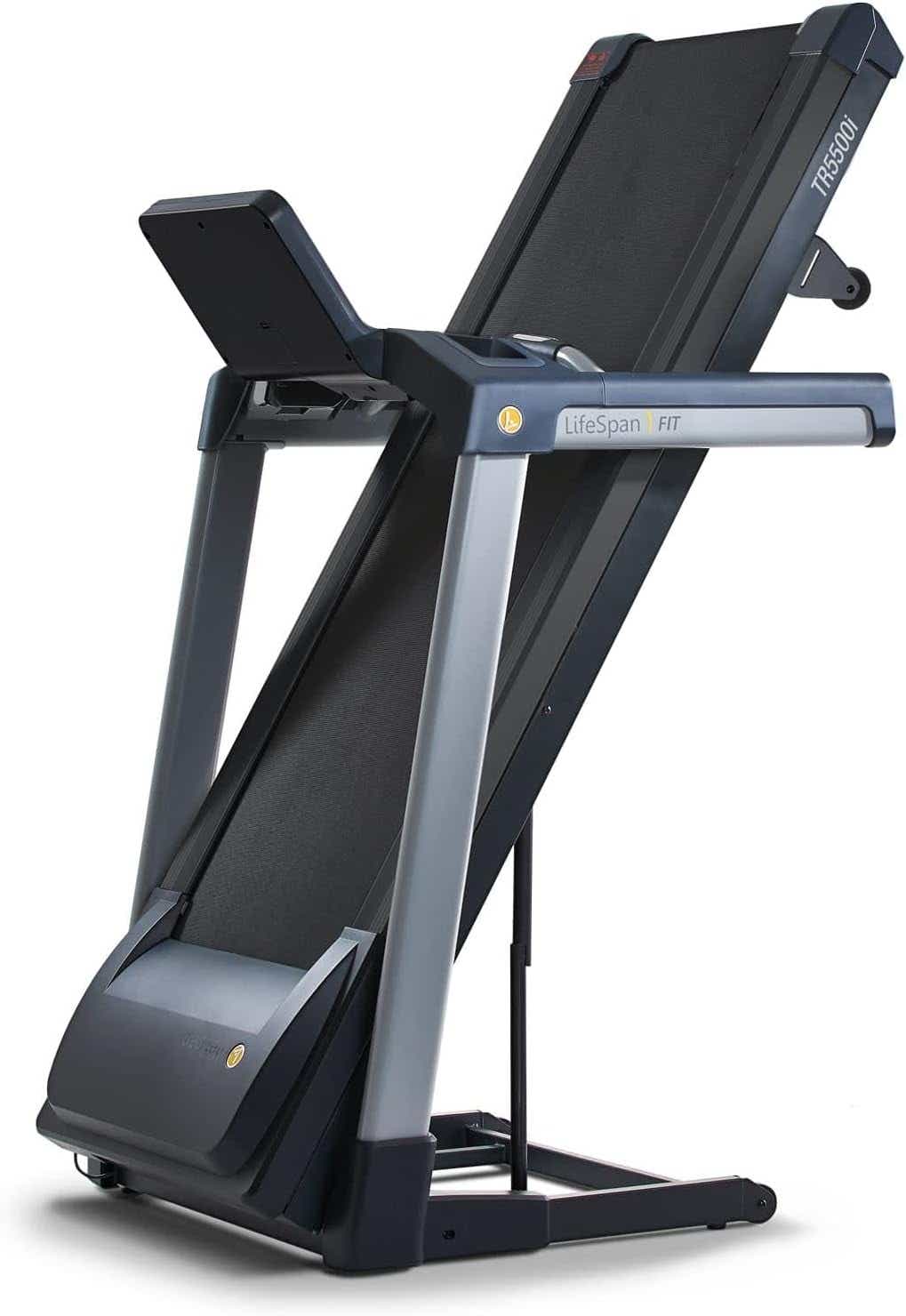Ever since the pandemic introduced us to “hot girl walks,” strolling has been having a moment. And it’s easy to see why: It’s free, low-impact, and requires no fancy equipment — plus, it’s good for you. Walking at a brisk pace for at least 150 minutes a week (that’s just a little over 20 minutes per day) has a slew of health benefits, like improving blood pressure, reducing risk of heart disease and stroke, and even helping with sleep. So it’s no wonder that simply walking for exercise has spawned a bunch of variations. Katie has added a weighted vest to her walks to up the impact, and she’s not the only one incorporating an accessory. There’s “slackline” walking, a fitness trend that’s all about walking on a tightrope-like webbing for muscle toning and improved balance. Some people are even turning to backward walking, which purportedly works the glutes and calves in a different way than forward walking. Others focus on quantity: getting 10, 15, or even 20 thousand steps in per day.
Incline and decline walking haven’t received as much social media attention, but a trainer tells us you should incorporate both into your treks.
While walking on a steady path has plenty of benefits (all outlined above), you’re probably already aware that walking uphill requires more effort and is, therefore, better for building muscle. Downhill walking gets a bad rap, though, and we’re here to change that.
To learn more about the benefits of incline and decline walking and how to train uphill and downhill safely, we spoke to AFAA Certified Personal Fitness Trainer and iFit Trainer Ashley Paulson.
Benefits of incline training
We’ve all huffed and puffed our way up a hill before, so it probably won’t surprise you to hear that incline walking provides a number of cardiovascular, muscular, and other health benefits. But here’s a quick rundown for those who tend to avoid a slight incline.
Heart benefits of walking uphill
Doing any kind of exercise will raise your heart rate, which is important because it allows your heart to pump more oxygen and blood through the body. Walking or running on an incline — especially if you’re used to flat roads — will raise your heart rate even if your speed slows. A 2013 study found that running on a two-percent incline compared to a flat road increased subjects’ heart rates by 5 percent, and increasing that to a 7 percent incline bumped up heart rate by nearly 10 percent.
What muscles does walking uphill work?
In addition to bumping up heart benefits, walking up a hill works different muscles than walking on level ground. Flat strides work your quads, but Paulson tells us that walking on an incline also works your hamstrings and glutes, or what’s called the posterior chain (if you’ve ever felt like your butt was on fire after climbing a hill, you know what we mean) and your calves (again — you’ve probably felt that yourself before).
The benefits don’t stop there: A 2018 study found that it might be a good exercise to help strengthen weak ankles. And because it’s still lower impact, some studies have found walking on an incline may be beneficial for people with knee osteoarthritis and knee replacements. “It’s less impact on the body than running,” Paulson says. “A lot of people can’t jog, so we have them walk on an incline instead."
Does walking uphill burn more calories?
If burning calories is one of your fitness goals, you might be pleased to learn that you’ll torch more of them walking uphill than you would on zero incline. A 2012 study that observed people walking at 0, 5, and 10 percent incline found that walking at a 5 percent incline raised “metabolic cost,” or energy expended (a fancy way of saying calories burned), between 52-69 percent compared to level ground. That’s a big difference! And when the incline increased to 10 percent, the metabolic cost increased over 100 percent — or double what it was at a flat road.
Benefits of Decline Training
Going down a hill might feel easy compared to going up, but don’t rule it out — it also has a host of health benefits. In order to understand why, we have to first talk about the different phases of movement. There are two main types of movement: concentric and eccentric (pronounced e-centric, not like your quirky aunt). In a concentric movement, your muscles are contracting (hence the name) — think of the way your bicep contracts as you raise a weight into a bicep curl. With eccentric movement, the muscles elongate — in that same bicep curl example, it’s when you lower the weight down. The concentric movement might make your muscles more fatigued in the short term, but you can’t have it without the eccentric movement. In fact, studies have shown that it’s eccentric movement that causes muscle soreness and fatigue. A 2018 review found that eccentric training increases resting energy expenditure, or calories burned while resting, more than concentric training, while also requiring less energy to perform. Studies have found eccentric movements can be effective for fat loss and building lean mass, particularly among people with chronic conditions like obesity and type 2 diabetes or who are older.
You might’ve already guessed this, but downhill walking is an eccentric movement. Paulson explains that because of the way the muscles are contracting, you might be more sore after walking downhill than uphill. That’s because many of us are not used to doing workouts focused on eccentric movements. Walking downhill also uses different muscle groups than uphill, like your quads and hip rotators — and even your abdominals as you brace yourself for balance.
Is walking downhill good for balance?
As we age, maintaining and improving balance is a common concern. There are a number of exercises that can improve balance, like this quick one that tests your coordination. But walking may also help you stay steady on your feet. Luke Apisa, MD, an emergency medicine physician, told Harvard Health Publishing, “Hiking on uneven terrain is an efficient way to build muscles in your lower body, which helps improve stability and balance." A 2013 review found that walking on uneven terrain forced subjects to make adjustments to their gait to maintain stability as they went. Doing so regularly could improve balance since it builds the habits and muscles needed to stabilize yourself on uneven ground.
Paulson tells us, “Walking downhill challenges your body in unique ways: It engages stabilizer muscles, improves proprioception, and strengthens eccentric muscle control to prevent falls.”
Another benefit? Walking downhill engages your core, Paulson says. “As you descend, your body naturally leans back to maintain balance, activating those deep abdominal muscles. Plus, your core works overtime to stabilize your spine and pelvis with each step.”
The risks of decline training
Because you’re essentially fighting against gravity, walking downhill comes with a risk of falling. A small study published in 2020 found that older adults who walked downhill versus level for 30 minutes were at a greater risk of falling for as long as 48 hours after the exercise.
Paulson explains, “Walking downhill does have more force, and you can definitely get injured, so you want to make sure you're doing it safely.”

Downhill walking can be tough on the knees because it puts more force on those joints than uphill walking. But taking smaller steps, walking on the balls of your feet, and adjusting your posture can all help protect against injury, Paulson says.
“People automatically want to pull back instead of bringing their hips forward a little bit.” She advises leaning forward a bit to work against your natural impulse to put on the brakes, so to speak, “because you’re going to be striking down with your heels more, which is going to cause more impact on the knees.”
How to incorporate decline training into your workout
Paulson says that when you’re thinking of adding a new element like decline training into your workout, “You want to start slow. You don't want to have your entire workout be on a decline when it's brand new, because your body's not used to it” and you could end up doing the incorrect form. She recommends incorporating it into 10 percent of your workout at first, at a 2-3 percent decline, and building from there.
She adds, “Make sure you're paying attention to your form. Give yourself enough room on the treadmill and let your body lean forward a little bit, and then you'll feel the benefits rather than risk injury.”
Best equipment for incline & decline training
NordicTrack Commercial X22i
This treadmill has a heftier price tag than others, but that’s because it has capabilities that other machines don’t: The incline on this cranks up to a whopping 40 percent (most treadmills go up to a 12 percent incline or so), and it also offers -6 percent on the decline. The 22-inch smart touchscreen integrates with iFIT’s software, which gives you access to thousands of trainer-led workouts.
NordicTrack Commercial 1250
NordicTrack
This treadmill doesn’t have quite the same capabilities as the X22i, but it also doesn’t come with as steep (see what we did there?) a price tag. And it’ll still help you in your training journey since it can go up to a 12 percent incline and a -3 percent decline. It’s also ideal for people living in tight spaces since the machine can fold up when not in use.
Sole TT8 Treadmill
Dicks.com
This treadmill’s slope ranges from 15 percent to -6 percent, and it contains a charging port so you don’t have to lose precious phone or tablet battery during your workout (plus, it can connect to Bluetooth, too).
LifeSpan TR5500i Treadmill
Amazon
LifeSpan’s commercial-grade treadmill is built for the home: It folds up to save space. It also gives a nice incline range, going up to 13 percent and down to -2 percent. The 10’’ smart touch-screen allows you to mirror videos from YouTube, if that’s your speed (no pun intended).













